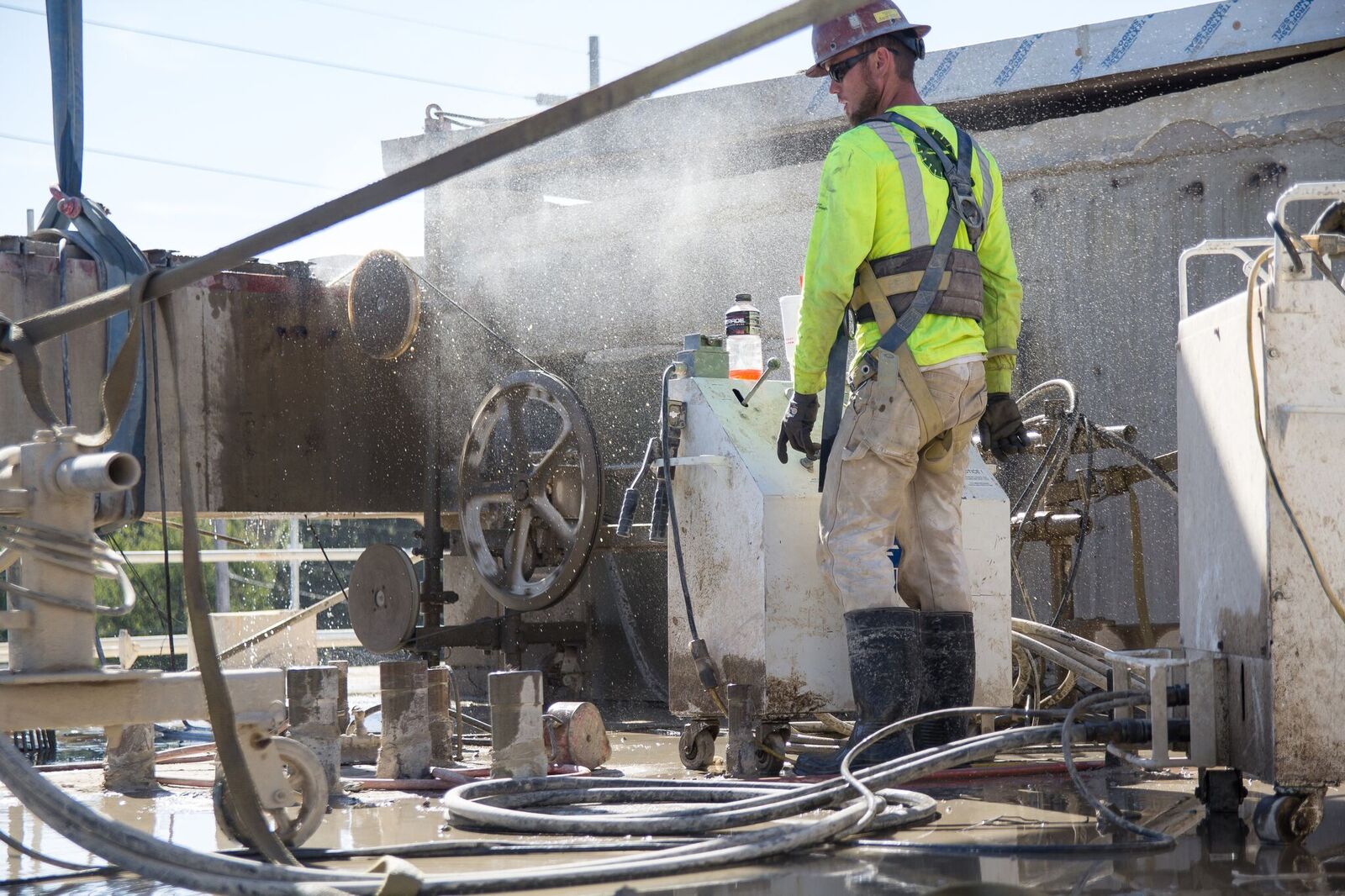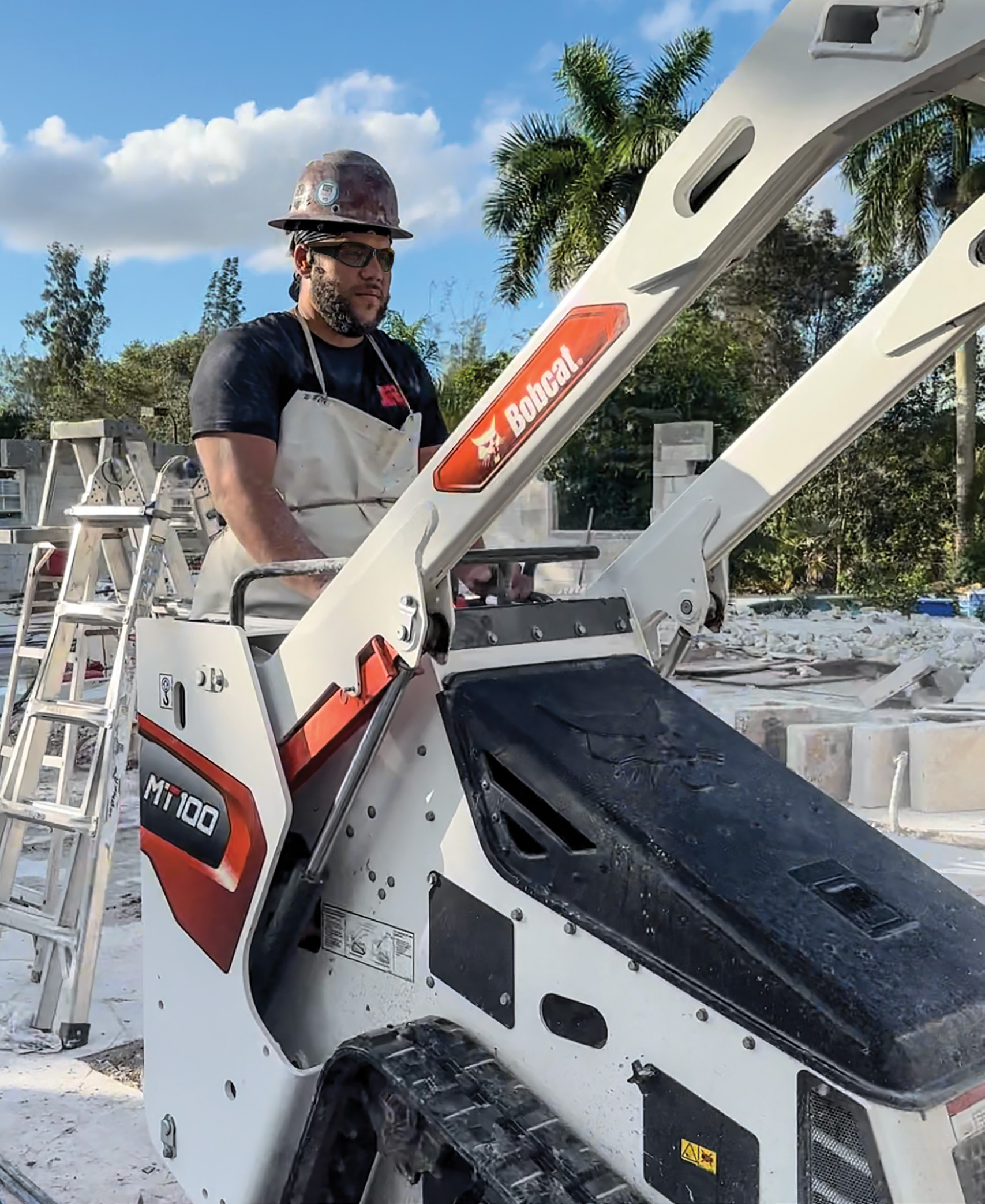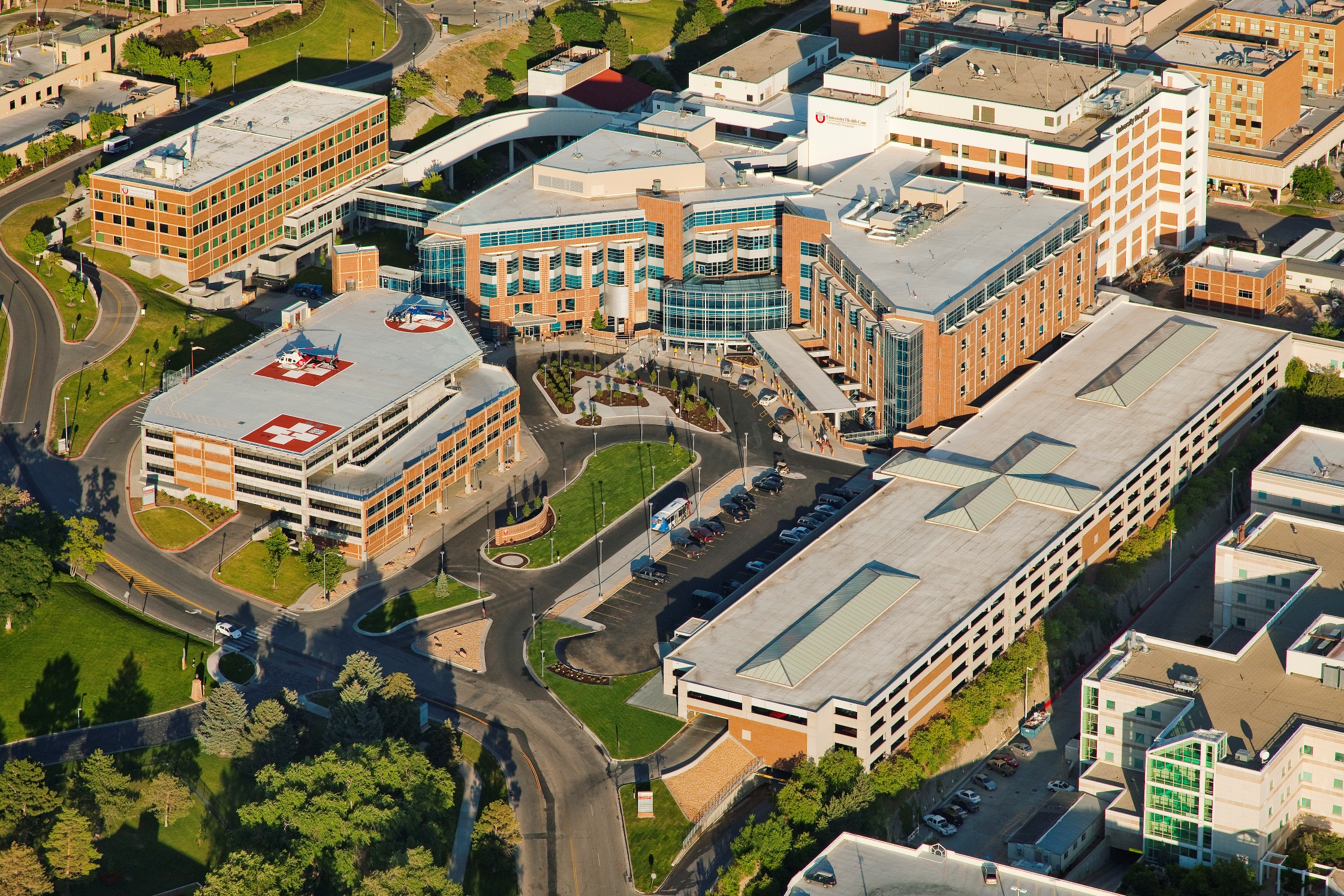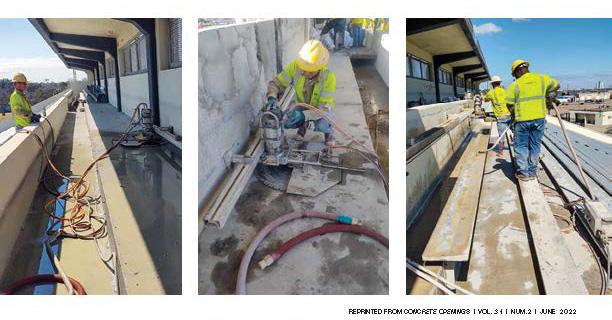
Night Cutters: Slicing Seven Miles of Concrete in the Middle of Oncoming Traffic
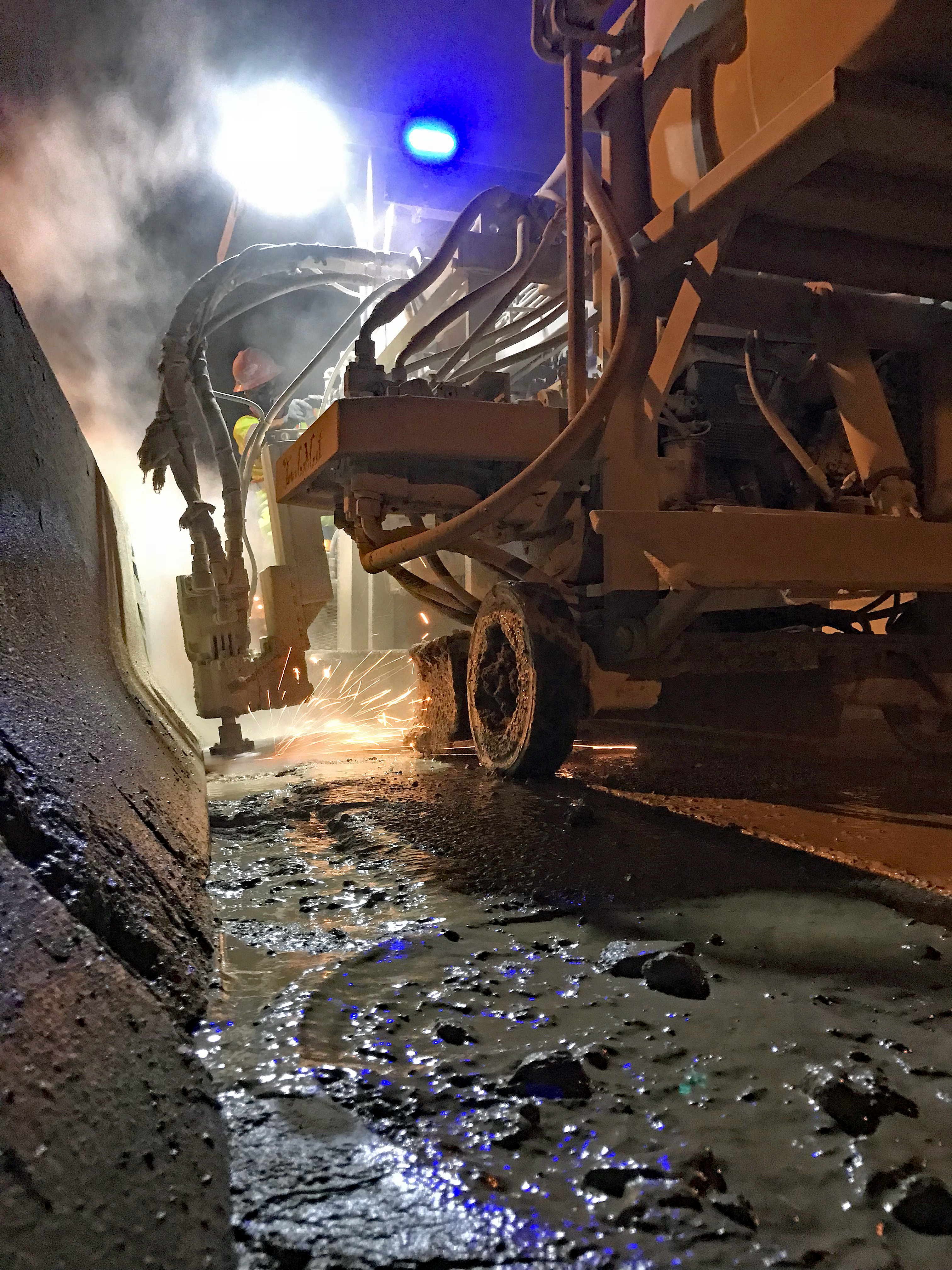
The Dallas North Tollway connects motorists between downtown Dallas and cities in Collin, Denton and northern Dallas counties. It is a 32-mile, six-lane, limited access expressway passing through and along the cities of Dallas, Highland Park, University Park, Addison, Farmers Branch, Plano and Frisco. A section of the highway had seven miles of an existing concrete barrier that ran down the center of the tollway. The operators of the tollway, North Texas Tollway Authority, wanted to remove the concrete barrier and replace it with a taller one that would help protect motorists in the case of automobile accidents. The taller barrier will be much safer, particularly for larger vehicles.

Sparks fly at night as the Texas Curb Cut Barrier Wall Machine slices into the 24-inch thick barrier.
The general contractor, Austin Bridge & Road, contracted demolition contractor Lindamood to remove and haul away the old barrier to make way for the new one. Lindamood originally considered demolishing the rail by crushing it in place, but this presented a challenge with the traffic schedule. Due to the fact that all tollway lanes would open back up to traffic each morning, that meant Lindamood would have to crush the barrier, load it and clean the highway all in about 6 hours; not to mention mobilizing and demobilizing all of the equipment each night of the job. It was determined that this method would only get about 100 linear feet of barrier demolished, loaded and cleaned up per night. After looking at the project schedule and job-site limitations, it was determined a different method was needed. It was then that Lindamood decided to contract CSDA member Texas Curb Cut to utilize diamond tools to help complete the project. This would expedite productivity, make the clean-up process easier and reduce the amount of equipment needed each night. It was estimated that more than 5,000 linear feet of barier could be demolished per day by using concrete cutting versus 100 linear feet using excavators and hydraulic crushers.
This project would require Texas Curb Cut to cut seven miles of 24-inch thick barrier mostly at night and on a busy tollway with limited space. This understandably raised some safety concerns which needed to be addressed before the job was started. Implementing safety guidelines was approached in a few different ways. The Dallas North Tollway is very busy, even in the middle of the night, so to ensure operator safety, there were concrete zipper barriers constructed, closing off one tollway lane in each direction for work to take place within. In addition, multiple crash attenuator trucks and off-duty police officers were brought in to ensure the safety of operators working close to oncoming traffic. Finally, everyone was required to wear class III safey vests, hard hats, eye and hearing protection.
Texas Curb Cut used their very own self-manufactured Barrier Wall Machine “A” with 28-inch Husqvarna blades to slice through all the sections of the 24-inch thick barrier. They started by sawing into the concrete horizontally along the bottom, releasing the barrier from the tollway and creating 15,000-pound sections that could be lifted and loaded into demo trailers. After a one-mile section was cut, Lindamood began mobilizing and picking up the 30-foot sections with a 100,000-pound excavator and manual clamp. The sections were then placed in a demo trailer and hauled off and dumped at the concrete crusher facility to recycle 100 percent of the concrete. Once all the barrier of a one-mile section was removed, the road was then cleaned in preparation for Austin Bridge & Road to cast a leveling pad in place and set the new 42-inch precast barrier pieces. The process was then repeated with the next mile-long section.

Husqvarna blades being used to cut the barrier into sections.
One of the biggest challenges during a job like this was having to mobilize and demobilize all the equipment every night, as well as complete the work with only one lane closed in each direction. Another challenge was that the roadway must be cleared of all debris each night because the area that operators were working in opened back up to traffic the next morning. Conveniently, the use of concrete cutting addressed many of the challenges by increasing safety, reducing downtime and decreasing noise, dust and debris. The sections of barrier could have been crushed in place by excavators and hydraulic crushers with production rates of only 100 linear feet removed per night. However, diamond cutting offered production rates of up to 5,725 linear feet removed per 20-hour period. Additionally, diamond tools helped maintain structural integrity, made clean-up easier, reduced labor costs, limited lane closures and allowed for the cutting of some heavily reinforced concrete. A true win-win!
Despite the limited space and access, late hours and quite a bit of rain, the project remains on schedule and within budget. Texas Curb Cut was extremely satisfied with the project and so was the general contractor. “Having Texas Curb Cut perform the sawing of the existing barrier has played a major role in keeping the project on schedule,” said Boone Massey of Austin Bridge & Road, “and having the barrier sawed horizontally instead of the traditional way to demolish has left a much cleaner and easier product for us to revamp for the placement of precast wall sections.”

Operators working within the zipper barriers on either side of the tollway .
Once all the original barriers are removed Austin Bridge & Road plans on performing a mill and overlay of 365,571 square yards over the seven miles between Harvest Hill Road and the Lemmon Avenue Bridge. The project is expected to be completed in June 2018 and will offer safer road conditions for motorists commuting on the Dallas North Tollway.
RESOURCES
General Contractor
Austin Bridge & Road
Irving, TX
Tel: 214-596-7300
Sawing Contractor
Texas Curb Cut
Round Rock, TX
Tel: 512-447-4477
Email: ray@texascurbcut.com
Demolition Contractor
Lindmood
Irving, TX
Tel: 972-721-0898
Methods Used
Curb cutting, barrier wall demolition











